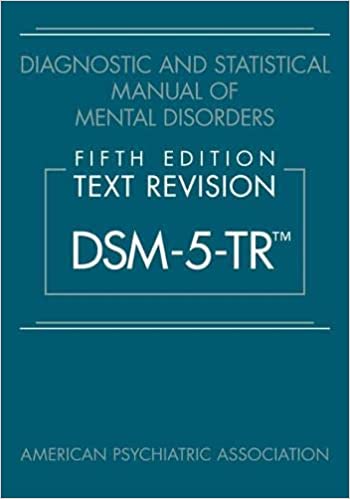Since its release in 1952, the Diagnostic and Statistical Manual of Mental Disorders (DSM) has been the go-to source for diagnosing mental disorders. Manual diagnoses raised the reliability with each new edition. Including the validity of the manuals. DSM-5 was released in 2013. Many professionals and patients have passed criticism over it. The changes and updates in DSM-5 are discussed in this article all through. Along with the pros and cons of those changes.
Contents
DSM-5 – The New Diagnostic Manual
 Looking into the latest edition of the Diagnostic and Statistical Manual for Mental Disorders. It specifies that this manual is used by mental health professionals only. The uses are quite enhanced from the previous one.
Looking into the latest edition of the Diagnostic and Statistical Manual for Mental Disorders. It specifies that this manual is used by mental health professionals only. The uses are quite enhanced from the previous one.
Let’s discuss those new updates:
- Now, Asperger’s Syndrome has been folded into Autism Spectrum Disorder. This move was made because there wasn’t enough evidence to support Asperger’s Syndrome as its own diagnosis.
- Now all patients with symptoms of autism spectrum will be diagnosed under one umbrella. That is termed Autism Spectrum Disorder.
- Obsessive-Compulsive Disorder (OCD) will now be classified into two categories- one is OCD, and the other is Obsessive-Compulsive Spectrum Disorder.
- Post Traumatic Stress Disorder (PTSD) can now be diagnosed in children aged six years or older.
- Schizophrenia will now be a spectrum disorder. This means that there are different severities of the illness. And not all patients will experience the same symptoms.
- The new manual also takes eating disorders into account. There are three types of eating disorders:- Anorexia Nervosa, Bulimia Nervosa, and Binge Eating Disorder.
- Addition of new diagnoses. Such as Disruptive Mood Dysregulation Disorder (DMDD) and Hoarding Disorder.
With all these changes, the new manual is surely going to be a game-changer in the field of mental health. So let’s see how it fares in the real world.
History Of The DSM
Looking back over the past few decades. It is interesting to see how psychiatric diagnosis has evolved. Diagnostic and Statistical Manual of Mental Disorders (DSM), released in 1952. It was an attempt to standardize psychiatric diagnosis. Almost 106 mental disorders are listed in this and provided a framework for diagnosing them.
Moving further with the second edition of the DSM in 1968. In this, the number of disorders increased to 165. The third edition was published in 1980 and it listed 235 disorders. The fourth edition (DSM-IV) was published in 1994. And it listed 297 disorders.
Finally, the fifth edition (DSM-V) was published in 2013. That concludes over 300 mental disorders.
The latest edition is not without its controversies though. Some professionals feel that by adding more and more disorders to the list, we are medicalizing normal human behavior. There is also a concern that with so many disorders now being recognized. Everyone will end up fitting into at least one category.
How DSM Helps In Treatment?

How mental health professionals will treat people with mental disorders? The arrival of DSM-5 gives relief to many.
It provides a common language and standard criteria for the diagnosis. Also helps to ensure that people with similar symptoms receive the same diagnosis.
People need to understand that the fifth manual is not perfect. In fact, some argue that it pathologizes normal human behavior and creates false epidemics. However, it remains an important tool in the field of mental health.
When making a diagnosis, clinicians will often use both the DSM-IV & ICD-CM. ICD-CM is an International Classification of Diseases, Clinical Modification. World Health Organization (WHO) has published this.
The ICD-CM contains codes for all diseases. While the DSM-IV only includes codes for mental disorders.
In addition, it is helpful for insurance companies and researchers. They can use the information in DSM to better understand mental disorders. Then, further, develop treatments for them.
Advantages Of The DSM-5
By clinicians to diagnose patients, DSM is largely uses. And, there are certain changes in the latest edition from the previous ones. Regarding new updates in the DSM-5, there must be pros and cons of it. Hence, let’s look into the advantages first.
- Multiple Perspectives – One of the key changes in DSM-V is that it gives clinicians different perspectives. In order to better understand a patient’s mental disorder. Multiple perspectives creates understanding of the etiology and causes.
- Better Reliability – The aim of new manual is to achieve the better reliability. In other words, two trained clinicians should arrive at the same diagnosis when they use DSM-V to assess a patient.
- Patient-Focused – It takes into account the patient’s perspective and experience with symptoms. This is in contrast to DSM-IV which was more focused on the clinician’s perspective.
- Inclusion Of Culture – One significant improvement in DSM-V is the inclusion of culture. This is important as different cultures may interpret symptoms differently. For example, a symptom like “grandiosity” may not be seen as pathological in some cultures. But would be considered so in others.
- Long and detailed – The new DSM is much longer and more detailed than the previous versions. It has been written user friendly for easy use of clinicians.
- Categorical system – Now, the system is changed to categorical. In that way, each diagnosis is either present or not. DSM-V will move to a dimensional system. For example, under the new system, major depressive disorder would have different symptoms than mild depression.
The new diagnostic manual has taken into account these advantages.
Limitations Of The DSM-5
 The DSM-IV has been in use for over two decades. Mental health community has deeply entrenched it. The new manual has not been without its share of criticism. Let’s begin with the cons of the new manual:
The DSM-IV has been in use for over two decades. Mental health community has deeply entrenched it. The new manual has not been without its share of criticism. Let’s begin with the cons of the new manual:
- Scientific: Many of the changes in DSM-V have been made on the basis of expert opinion. This has led to lack of scientific evidences concerns. And assumed that some alterations may be inaccurate. For example, there is “disruptive mood dysregulation”.
- Overuse of categories: Critics charge that the number of diagnoses in DSM-V has increased too dramatically. That causes overdiagnosis and overtreatment. For instance, the inclusion of “mixed anxiety depressive disorder”.
- Influences: Relationship between Pharmaceutical industry and APA is under alleged. That, it led to an over-emphasis. That directly effected on psychiatric medications.
- Stigmatizing labels: Some people feel that mental disorders are stigmatizing and fearful. And, the new DSM will only make this worse. They point out that many of the changes seem to pathologize normal behavior (e.g., social anxiety disorder). People worry that this could lead to more discrimination against those with mental illness.
- Created Labels – Some people feel that these are not real disorders. It will only create labels for normal human behavior. Also, it might create differences with humans with mental illness.
So, what’s the verdict? Is DSM-5 a good or bad thing?
Actually, it’s hard to say. On one hand, the new manual does have some valid criticisms. And, there is a worry that it will lead to overdiagnosis and overtreatment. And, other hand, scientific evidences supported many of the changes.
Conclusion
To conclude, DSM-5 is the latest Diagnostic and Statistical Manual. Clinicians and psychiatrists widely uses this. In order to help diagnose patients. Fifth manual is the updated version of DSM-IV-TR. With new updates, it included new disorders to a great extent. Along with that, some changes in the existing disorders.
Overall, it aims to provide a more comprehensive understanding of mental disorders and their symptoms. While there is still much debate surrounding the use of this manual. It remains an important tool for mental health professionals.
With its updates, DSM-5 provides a more accurate portrayal of mental disorders. Ultimately, these changes lead to better diagnosis and treatment. In the end, only time will tell how successful it will be in achieving its goals. Until then, it remains an essential resource for mental health professionals.
A Word From Therapy Mantra
Your mental health — Your psychological, emotional, and social well-being — has an impact on every aspect of your life. Positive mental health essentially allows you to effectively deal with life’s everyday challenges.
At TherapyMantra, we have a team of therapists who provide affordable online therapy to assist you with issues such as depression, anxiety, stress, workplace Issues, addiction, relationship, OCD, LGBTQ, and PTSD. You can book a free therapy or download our free Android or iOS app.


